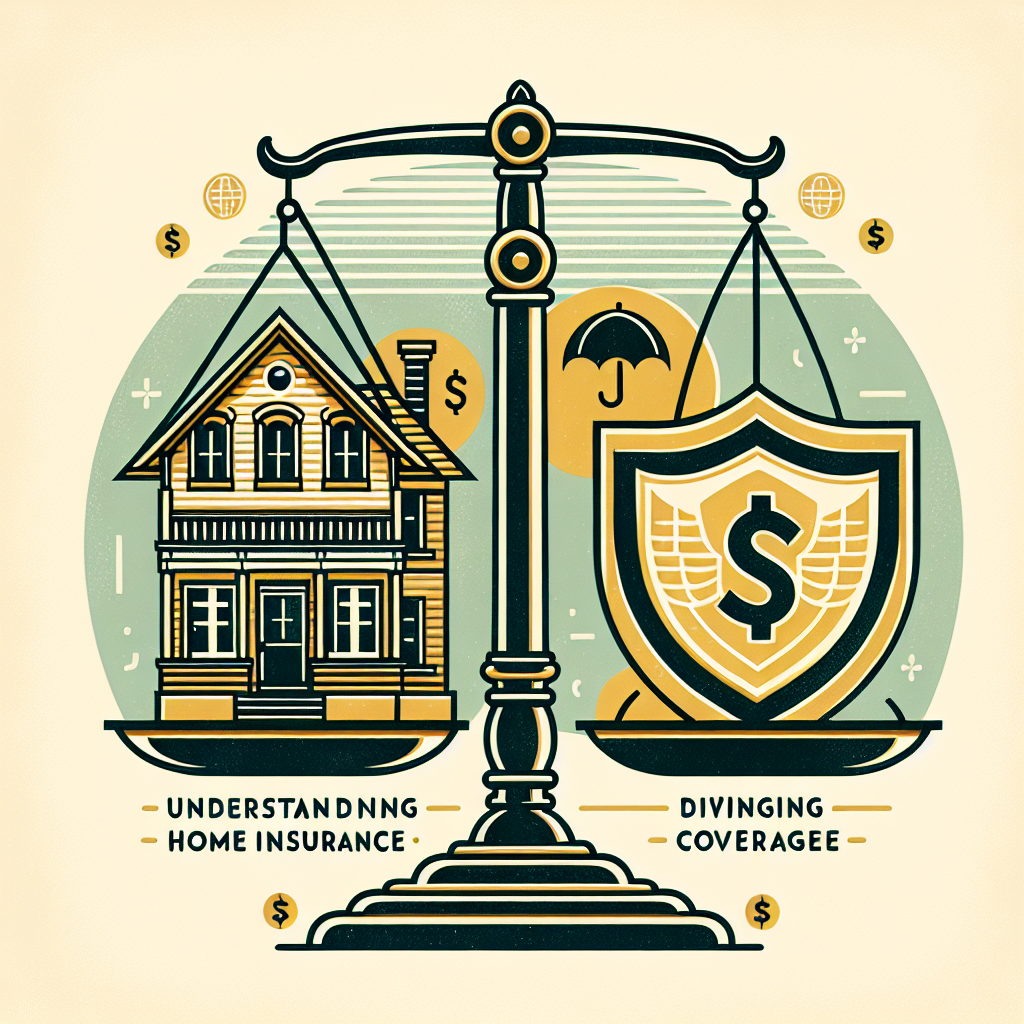Filed under Home Insurance on
Loss Assessment Coverage Home Insurance Guide

If you live in a condo, townhome, or any community with shared spaces, assessments from your association can arrive when you least expect them—after a storm tears off the roof, a lobby fire damages common areas, or a lawsuit exceeds master policy limits. Those costs are spread among owners, often running into thousands of dollars per unit. To cushion that blow, consider adding loss assessment coverage home insurance to your personal policy. This guide explains how it works, what it covers, and how to choose the right limit for your situation.
What is loss assessment coverage?
Loss assessment coverage is an add-on (endorsement) to a homeowner’s or condo policy that helps pay your share of an association assessment tied to a covered loss. Associations—HOAs, condo associations, and co-ops—carry a master insurance policy for buildings and common areas. When that coverage falls short or a large deductible applies, the association can levy an assessment against individual owners. With loss assessment coverage home insurance, your personal policy can step in to reimburse your portion, up to your selected limit and subject to policy terms.
The coverage generally applies to three broad categories:
- Property damage to common areas (e.g., roofs, hallways, elevators) caused by a peril your policy covers, such as fire or wind.
- Master policy deductibles, which associations increasingly set at high fixed amounts or percentages to control premiums.
- Liability claims arising from common areas when a verdict or settlement exceeds the master policy limit, if your policy supports liability assessments.
Note that coverage specifics vary by insurer and state. Some policies limit the use of loss assessment coverage to property-only losses unless a separate endorsement expands it to liability assessments as well.
How a typical assessment works
- A covered incident damages a common area or results in a liability claim.
- The association files a claim with the master policy carrier.
- If there’s a deductible or shortfall, the board divides that amount by the number of units to create a per-unit assessment.
- Each owner receives a notice of their portion due by a set date.
- If your personal policy includes loss assessment coverage, you submit the assessment notice to your insurer for reimbursement, subject to terms and limits.
What does it cover?
While you should read your policy for exact language, most loss assessment endorsements address these situations:
- Association property deductibles for named perils (e.g., the HOA’s $100,000 wind deductible after a storm damages the roof).
- Shortfalls where damage exceeds master policy limits (for covered perils).
- Liability assessments from covered incidents in common areas (where your endorsement includes liability assessments).
- Damage to shared structures like garages, clubhouses, and pools when a covered peril triggers the assessment.
Insurers typically require that the cause of loss be a peril covered by your personal policy. If your unit policy excludes a peril—such as flood or earthquake—your loss assessment coverage will generally not respond to assessments from those events unless you’ve purchased the corresponding endorsements.
What it usually does not cover
- Assessments for routine maintenance, budget shortfalls, or deferred repairs.
- Cosmetic or elective upgrades, capital improvements, or betterments unrelated to a covered loss.
- Fines and penalties imposed by the association (unless your policy explicitly allows it, which is uncommon).
- Losses from excluded perils (e.g., flood, earth movement, ordinance or law unless endorsed).
- Damage or liability attributable to your personal negligence in your unit (that falls under other coverage sections).
- Assessments for a loss that occurred before you owned the unit (often excluded as a known loss).
Who needs it?
Loss assessment risk is most acute for owners in shared communities, especially:
- Condominium and co-op owners (HO-6 policies), where common areas represent large shared exposures.
- Townhome or single-family owners in planned communities with shared facilities (clubhouses, private roads, gates).
- Communities with high master policy deductibles—common in coastal, hail-prone, or wildfire zones.
- Associations with aging infrastructure where major, costly repairs are likely after a covered event.
Condo owners should ask about loss assessment coverage home insurance when they review their bylaws, which often give boards broad authority to levy assessments after insured losses.
Coverage limits, sublimits, and deductibles
Loss assessment coverage is typically offered in fixed increments (e.g., $10,000, $25,000, $50,000, $100,000). Many carriers default to $1,000–$2,000 unless you increase it. For property-related assessments, insurers often apply the full selected limit. For liability-related assessments, some carriers cap coverage at a smaller sublimit or require a specific endorsement. Always confirm:
- Your overall loss assessment limit (e.g., $50,000 per occurrence).
- Any separate sublimit for liability or specified perils (e.g., $5,000 for liability assessments without the expanded endorsement).
- Whether there’s a deductible for this endorsement (some policies apply none; others attach a small property deductible).
- Per-occurrence versus annual aggregate wording.
When comparing loss assessment coverage home insurance limits, match them to your association’s exposure profile, not just the premium difference. A higher limit can be surprisingly inexpensive relative to potential assessments.
Real-world scenarios and cost math
-
Wind damage to roof: A storm causes $750,000 in roof damage to a 150-unit building. The master policy uses a 2% wind deductible, which equals $300,000. The board assesses $2,000 per unit ($300,000 ÷ 150). An owner with a $10,000 loss assessment limit submits the $2,000 invoice and is reimbursed, subject to policy terms.
-
Lobby fire with shortfall: A fire causes $1.2 million in damage. The master policy limit is $1 million with a $50,000 deductible. After the insurer pays $1 million, a $200,000 gap remains ($150,000 over the limit plus $50,000 deductible). With 100 units, the assessment is $2,000 per owner. Owners with limits at or above $2,000 are typically covered; those with lower limits pay the difference out of pocket.
-
Pool injury liability: A guest slips at the pool and wins a $1.5 million verdict. The master liability limit is $1 million. The $500,000 shortfall is assessed across 200 units ($2,500 each). Only owners whose endorsements include liability loss assessments—and whose limits are sufficient—can rely on their policy for reimbursement.
How much coverage do you need?
The right loss assessment coverage home insurance limit depends on your community’s risk posture. Use these steps to estimate a target:
- Obtain association documents: Request the master policy declarations page, deductible schedule, recent reserve studies, and bylaws about special assessments.
- Identify deductibles by peril: Wind/hail, named storm, hurricane, wildfire, and water damage can carry high deductibles. In many markets, wind/hail deductibles range from $100,000 to 5% of insured value.
- Estimate a worst-case assessment: Divide the largest likely deductible or plausible shortfall by the number of units. In a 120-unit building with a $250,000 wind deductible, a single event could lead to about $2,083 per unit; a bigger shortfall could double or triple that.
- Factor in liability exposure: If your building has high foot traffic amenities (pools, gyms), consider a higher limit and make sure your endorsement includes liability assessment coverage.
- Balance cost and risk: Increasing from $10,000 to $50,000 or $100,000 is often inexpensive—ask your agent for quotes at several tiers.
Many agents recommend at least $25,000–$50,000 for condos in hail or hurricane-prone states, and $50,000–$100,000 for large high-rise associations with big deductibles. The Insurance Information Institute notes that rising catastrophe losses have pushed deductibles higher, making personal loss assessment limits more vital than a decade ago.
Market trends influencing assessments
Industry data from reinsurers and analytics firms point to elevated catastrophe losses in recent years, especially from severe convective storms and secondary perils. As a result:
- Associations increasingly adopt higher deductibles to control master policy premiums.
- Percentage deductibles (e.g., 2% of building value) can translate into six- or seven-figure sums for large properties.
- Some carriers limit coverage capacity in coastal and wildfire zones, increasing the odds of liability or property shortfalls after large events.
- Inflation in construction materials has raised repair costs, increasing the gap between property damage and insurance limits.
These shifts raise the stakes for owners. Carriers are raising master deductibles, increasing the importance of loss assessment coverage home insurance. According to recent industry commentary from the NAIC and the Insurance Information Institute, HO-6 policyholders should expect more scrutiny on association deductibles and a push to align personal coverage with those exposures.
State rules and nuances
State statutes and case law can affect how assessments are levied and what owners owe. For example:
- Florida’s condo law specifies association insurance responsibilities and the treatment of deductibles after a covered loss. High hurricane deductibles are common, and many carriers require named-storm endorsements.
- In hail-prone states like Texas and Colorado, HOAs often adopt large wind/hail deductibles, leading to frequent per-unit assessments after major storms.
- Some states or association bylaws limit how assessments are allocated (equal shares versus percentage interests). That allocation changes your likely per-unit exposure.
Consult your association’s attorney or a local insurance professional for guidance. While this guide is educational, it is not legal advice.
How to add the coverage
If you carry a condo (HO-6) or homeowners policy (HO-3/HO-5) in a managed community, ask your agent to add the endorsement. Steps:
- Gather documents: Master policy dec page, deductible schedule, bylaws, and any recent assessment notices.
- Request quotes at multiple limits (e.g., $10k, $25k, $50k, $100k) with and without liability assessment coverage.
- Ask about peril-specific endorsements: earthquake and flood loss assessments usually require separate endorsements or policies.
- Confirm sublimits and deductibles: Ensure liability assessment coverage isn’t capped at a token amount.
- Review annually: Update limits if the association changes deductibles or adds amenities.
Ask your agent to add loss assessment coverage home insurance endorsement language that clearly includes both property and liability assessments, if available.
Filing a claim for an assessment
When an assessment notice arrives, time matters. Follow this playbook:
- Verify the cause: Confirm that the incident causing the assessment is a covered peril under your policy.
- Collect paperwork: Obtain the association’s assessment letter, the master policy claim summary, and the deductible calculation.
- Notify your insurer promptly: Many policies have strict timeframes for reporting potential claims.
- Submit proof of payment: Some carriers reimburse after you pay the assessment; others pay directly upon validating the claim.
- Track communication: Keep emails from the board and the property manager to support your claim file.
If your claim is denied, ask for the specific policy language behind the decision. A minor wording difference—such as whether liability assessments are included—can determine the outcome.
Common myths and realities
- Myth: The master policy covers everything. Reality: Master policies often have large deductibles or limits that can be exceeded by major losses.
- Myth: Personal condo insurance only covers my unit. Reality: With the right endorsement, it can also cover assessments tied to common areas.
- Myth: All assessments are covered. Reality: Only assessments stemming from covered perils and eligible costs qualify.
- Myth: Flood or earthquake assessments are included. Reality: They require separate endorsements or standalone policies in many regions.
Smart ways to reduce assessment risk
- Participate in your HOA: Vote on risk management measures like roof upgrades, defensible space for wildfire, and improved lighting in common areas.
- Encourage adequate master limits: Underinsuring common property can lead to painful shortfalls later.
- Support realistic reserves: Strong reserves can lessen the need for assessments after a loss.
- Push for safety protocols: Slip-resistant surfaces, pool rules, and security cameras can reduce liability claims.
- Document unit improvements: If your bylaws make owners responsible for certain interior finishes, ensure your personal policy and loss assessment limits reflect that risk.
Shopping checklist
- Endorsement included? Verify loss assessment coverage appears on your declarations page.
- Limit amount: Choose a limit that reflects your association’s biggest deductible and potential shortfalls.
- Liability assessments: Confirm your endorsement includes liability, not just property.
- Sublimits and deductibles: Watch for small liability sublimits or hidden deductibles.
- Perils included: Ask how wind, hail, named storms, flood, and earthquake are treated.
- Per occurrence vs. annual aggregate: Larger communities might need broader aggregate protection.
- Cost-benefit: Price higher limits; the premium jump is often modest.
- Agent expertise: Work with a professional familiar with HOAs and high-rise exposures.
Frequently asked questions
Does loss assessment coverage pay for every type of HOA assessment?
No. It typically pays only for assessments tied to covered losses and eligible costs (like deductibles or shortfalls). Budget gaps, maintenance, and fines are usually excluded.
Is a separate deductible applied to loss assessment claims?
Some policies do not apply a separate deductible, while others do. Check your declarations or ask your agent to confirm.
How do I know if I need liability assessment coverage?
If your association has amenities with higher injury risk—pools, gyms, playgrounds—or hosts frequent events, consider adding liability assessment coverage and ensure your personal liability limits are robust.
Is this coverage only for condos?
No. Any homeowner in an association with shared spaces can face assessments after insured losses, including townhomes and single-family homes in planned communities.
Will my insurer pay before I pay the assessment?
Practices vary. Some carriers reimburse only after you provide proof of payment; others may pay once the claim is validated. Ask your carrier upfront.
Does loss assessment coverage home insurance cover HOA fines?
In most cases, no. Fines and penalties are generally excluded unless explicitly stated in your policy.
How to read your association documents
Your bylaws and master policy contain clues that affect your risk:
- Responsibility matrix: Some bylaws make owners responsible for interior surfaces and fixtures, which can shift portions of a loss to owners.
- Assessment authority: Look for language governing special assessments after insured events.
- Deductible allocation: Some documents specify per-unit, percentage interest, or negligence-based allocation methods.
- Master policy form: Single-entity, all-in, or bare-walls forms change what the association covers versus owners.
Understanding these terms helps you set a proper loss assessment limit and avoid surprises later.
Coordinating with umbrella liability
If you carry a personal umbrella, ask whether it extends to liability assessments tied to common areas. Many umbrellas sit over your underlying liability coverage, so you’ll want to verify requirements (e.g., minimum underlying limits) and whether the umbrella contemplates association assessments.
Cost expectations
Pricing varies by state, insurer, building type, and chosen limit. Often, moving from a token $1,000 limit to a meaningful $50,000–$100,000 costs far less than owners expect—sometimes a small fraction of the total HO-6 premium. That modest increase can offset a significant per-unit assessment after a major claim. When shopping for loss assessment coverage home insurance, request quotes for several limit tiers so you can compare marginal cost against potential exposure.
Practical example: choosing a limit
Consider a 200-unit coastal condo with a $2 million building value and a 2% named-storm deductible ($40,000). While that sounds manageable, the association recently upgraded amenities, and construction inflation is high. After a hurricane, roof and exterior damage total $900,000. The named-storm deductible applies, and the board assesses $200 per unit ($40,000 ÷ 200). A year later, a separate liability claim from the pool results in a $1.3 million settlement on a $1 million master limit, creating a $300,000 shortfall—$1,500 per unit. An owner who carries a $10,000 limit with liability assessment coverage easily absorbs both assessments, while an owner with a $2,000 limit may fall short in the second event.
Documentation tips for faster claims
- Save board notices, meeting minutes, and contractor estimates tied to the loss.
- Ask the property manager for a breakdown of the deductible and per-unit calculation.
- Keep your unit policy, endorsements, and declarations in a single digital folder for quick access.
- Note claim deadlines and follow up in writing if you need additional time.
When you might increase your limit
- The association raises the master deductible or changes to percentage deductibles.
- Common area amenities expand (new gym, rooftop deck, or playground).
- Major repairs reveal higher replacement costs across the property.
- You learn about frequent slip-and-fall incidents or prior liability claims.
- Your association’s reserve study indicates limited funds for emergencies.
In each case, reassessing your loss assessment coverage home insurance can prevent a future assessment from destabilizing your budget.
Negotiating with your association
Owners can engage constructively to manage risk:
- Propose a deductible buy-down if the association can afford it or if the cost-benefit makes sense.
- Advocate for pre-loss contracts with restoration vendors to speed response and reduce severity.
- Encourage regular maintenance on roofs, gutters, and fire suppression equipment.
- Promote training for board members on insurance basics and claims handling.
These measures can reduce both the likelihood and size of assessments after a loss.
Key takeaways
- Assessments after insured losses are common in shared communities and can be costly.
- Adding an endorsement for loss assessment coverage home insurance helps reimburse your share when the master policy falls short or deductibles apply.
- Choose limits based on your association’s deductibles, amenities, and claims history—not just default amounts.
- Confirm whether your endorsement includes liability assessments and check for sublimits.
- Reevaluate annually as deductibles, building values, and legal environments change.
With the right preparation and an appropriately sized endorsement, you can keep surprise assessments from derailing your finances—and enjoy the benefits of community living with more confidence.





